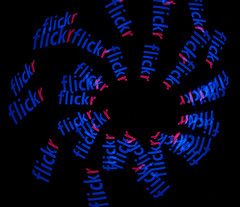I created this blog as part of an assignment for a Massey University paper, Social Media Networks for Business. It’s been a valuable experience. There’s nothing like applying knowledge to make it stick.

Image via Flickr by Gmacqueron
It’s easy to read something and think I understand it but the real test is whether I can write about it. Reviewing readings and researching until I can blog about a topic has ensured a better understanding of course content and writing in my own voice, rather than worrying about my academic writing skills, has enabled me to put my full focus into understanding the content.
The other thing I’ve found really valuable is actually blogging, not theorising about blogging, or writing an assignment as if I was writing a blog.
The experience of creating the blog, settling on a name and a corresponding url, thinking about and organising tags and categories and even using the draft and publish tools has been a little bit trial and error, even with an intuitive tool like WordPress. Far better for that learning curve to take place on my own blog rather than a work blog.
Can I use that image?
Another good lesson for me has been sourcing images to use on my blog. I haven’t done this before. I use my own photos for my other work, and in the workplace, my organisation uses images they own or have purchased a licence for.

Image via Flickr by Chinmay
Because I hadn’t needed to, I hadn’t spent any time on Flickr before starting this blog. Now I’m hooked. This doesn’t seem uncommon; the Flickr Addicts group has over 60,000 members.
Checking out my earlier and later blog posts will show how much images add to visual interest and readability. I could go back and add images to my earlier posts, but I haven’t – they illustrate part of my learning journey.
Image sharing is great. Imagine, if you’ve created an image professionally, sharing it can enhance your online reputation by showcasing your skills further than your own networks – everyone wins. Someone gets to use an image they want for free, and the image creator extends their online reach. Now that’s pretty cool, and definitely in line with the principles of Web 2.0.
Licensing such as Creative Commons makes this possible. Creative Commons came about because traditional copyright licensing just didn’t cover all the ways people want to share their creative efforts in the digital space.
It can be confusing figuring out if you can use an image but a quick Google search will throw up a lot of information on the topic. Techsoup has an informative article, Finding and using images from the web, that also gives a list of sites to search for images.
Basically, if you want to use someone else’s image, check they allow it to be shared in the way you want to use it, then acknowledge where you sourced the image. The acknowledgement and a corresponding link back to the original image is what makes the whole sharing thing work by giving the image creator recognition from a wider network. Besides, it’s polite to say ‘thanks’.
If you’ve used the image in a really cool way, why not let the image creator know? Again, there’s win-win potential – if they choose to promote that image use within their networks, your site gains visitors from beyond your digital reach.
Getting social at work
If you’re tasked with implementing social media tools in your workplace, I’d definitely recommend trying out the platforms you’ll be using personally – gaining knowledge and experience in using the tools and on touchy topics like photo sharing will increase your confidence. This is likely to mean you’ll be more comfortable sharing that knowledge with colleagues and encouraging them to do their own research and to communicate it back to the team.

Image via Flickr by isbg6
Set up a wiki or a blog or some other tool where the team can add their experiences and findings and before you know it, you’re demonstrating the four Cs of social networking – you’re communicating the knowledge you gain, connecting to information from others, cooperating by all contributing on the same platform and collaborating by working on the same project. In this instance the project would have the dual purpose of gaining the knowledge and skills to enable your organisation to make successful and productive use of social media tools and creating a knowledge base for future reference.












 You can cooperate without collaborating, if collaboration is not the end goal, but can you have any form of collaboration without cooperation?
You can cooperate without collaborating, if collaboration is not the end goal, but can you have any form of collaboration without cooperation?